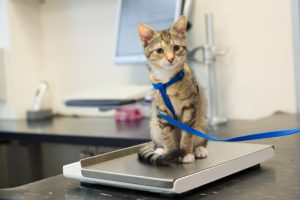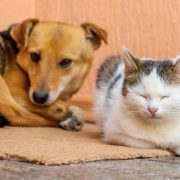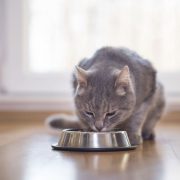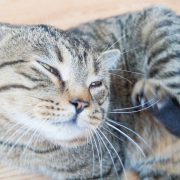Comparison of growth in neutered Domestic Shorthair kittens with growth in sexually-intact cats
Comparison of growth in neutered Domestic Shorthair kittens with growth in sexually-intact cats

Open access
In our edition of: Jun 2023
In our categories of: small animals
our summary:
Salt, C. et al. (2023) Comparison of growth in neutered Domestic Shorthair kittens with growth in sexually-intact cats PLoS ONE, 18 (3), p. e0283016.
This aim of this study was to compare the growth patterns of healthy kittens, neutered during growth, with growth standards created for sexually-intact kittens. The paper combined the findings of two different studies.
The study population of the first study was domestic shorthair cats under 2.5 years of age that attended Banfield Pet Hospital for routine healthcare check-ups between 1994-2016 and had at least one record of optimal body condition. From the total dataset of 188,000 castration and 181,000 ovariohysterectomy operations the authors of this study constructed four neutering age groups by dividing the total into quartiles. For male kittens they were neutering ages of up to 20 weeks, 20–23 weeks, 23–28 weeks and >28 weeks, while for female cats they were neutering ages of up to 21 weeks 21–25 weeks, 25–29 weeks and >29 weeks. The effect of age at neutering on bodyweight was then assessed.
The second study was carried out at Waltham Petcare Science Institute and involved 11 pairs of kittens which were randomly allocated either for neutering at 19 weeks or kept sexually intact. All kittens were fed a nutritionally-complete commercial dry diet until one year old. The kittens’ body composition, morphological measurements and bodyweights were measured at 11, 18, 30 and 52 weeks.
Using data from the first study the results showed that for all neuter groups in both sexes the median growth trajectory increased after neutering. The increase was greater in female than male kittens and was less marked for kittens neutered later in both sexes. The effect was least in kittens neutered after 28–29 weeks.
Results from the second study showed neutered kittens were heavier by 52 weeks with both a greater fat mass and greater lean mass. Abdominal girth and rib cage length were also greater, there were no differences in other measurements.
Limitations of this study include the retrospective nature and that the data for study 1 was collected over a period of just over 20 years, during which practice protocols may have changed. The data also came from a single network of veterinary hospitals in North America meaning it may not be generalisable to primary care practice in the UK. The study population for the second study only included female kittens neutered at 19 weeks so it was not possible to assess the effects in male kittens or on neutering at different ages.
A Research Focus podcast in which Professor Alex German discusses this paper is available.
This study provides some evidence of the effect of age at neutering on the growth trajectory of kittens, and in particular in female kittens. Veterinary surgeons should consider the potential impact early neutering might have on gain of adipose tissue and consider this as part of the risk-benefit analysis about age of neutering. Bodyweight and body condition should be closely monitored especially after neutering to prevent inappropriate weight gain.
The following may also be of interest:
inFOCUS: Benefits and risks of neutering pets – what is the evidence? [RCVS Knowledge] [online] Available from: https://infocus.rcvsknowledge.org/brnp_benefits-and-risks-of-neutering-pets-what-is-the-evidence/ [Accessed 18 June 2023]
WALTHAM Kitten Growth Charts [WALTHAM] [online] Available from: https://www.waltham.com/resources/kitten-growth-charts [Accessed 18 June 2023]
References for previous studies
Salt, C. et al. (2022) Growth standard charts for monitoring bodyweight in intact domestic shorthair kittens from the USA. PLoS ONE, 17 (11), p.e0277531. https://doi.org/10.1371/journal.pone.0277531
Alexander, L.G. et al. (2011) Effects of neutering on food intake, body weight and body composition in growing female kittens. British Journal of Nutrition, 106 (S1), pp. S19–S23. https://doi.org/10.1017/S0007114511001851
Claiming CPD for reading inFOCUS articles
Reading and reflecting on articles can count towards your CPD, and we have a template to help you with the process.
Image copyright attribute: ivonnewierink
Join the discussion
We encourage discussion on all material highlighted in each edition of inFOCUS. Use the button below to join the conversation on Twitter and include your comment in the feed for this issue.






Leave a Reply
Want to join the discussion?Feel free to contribute!